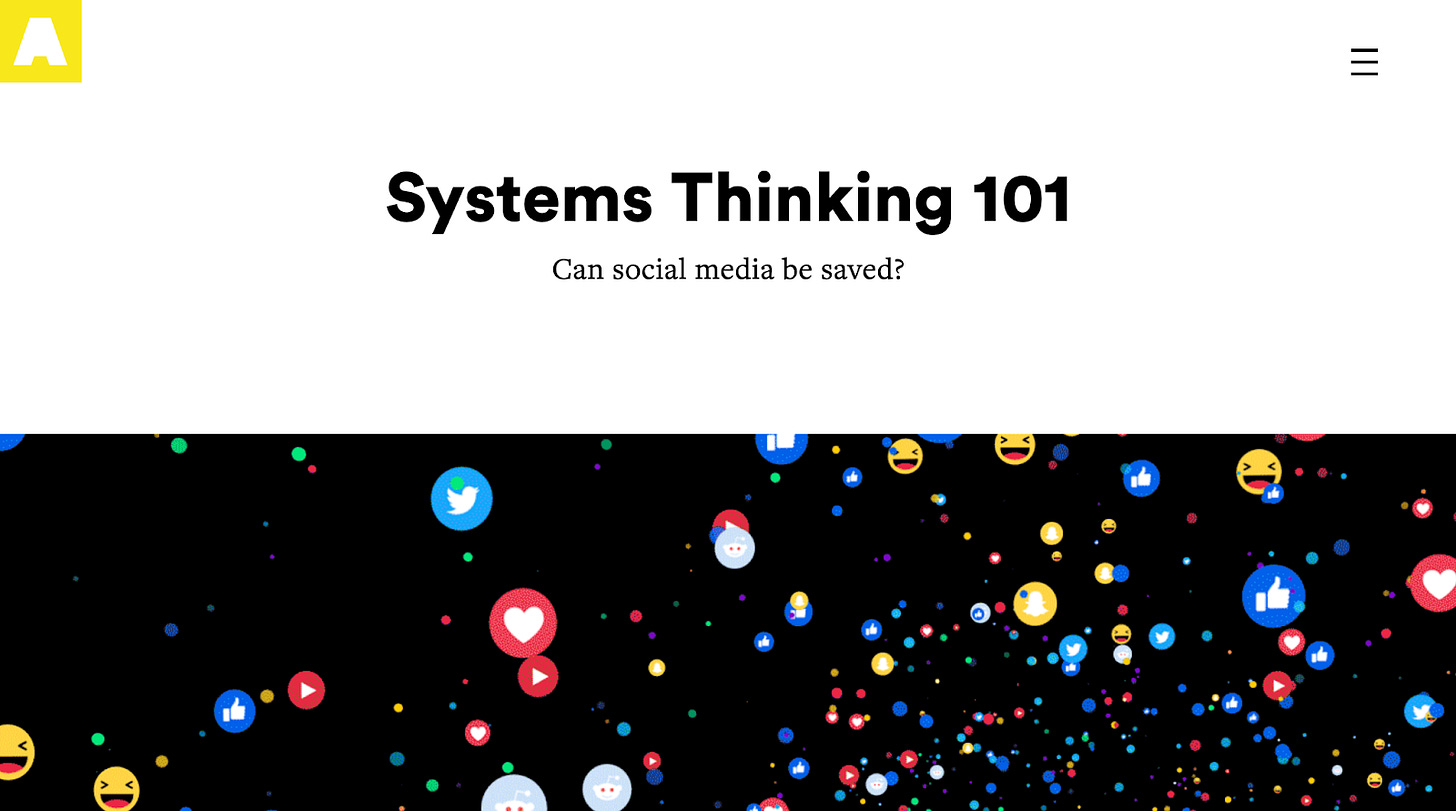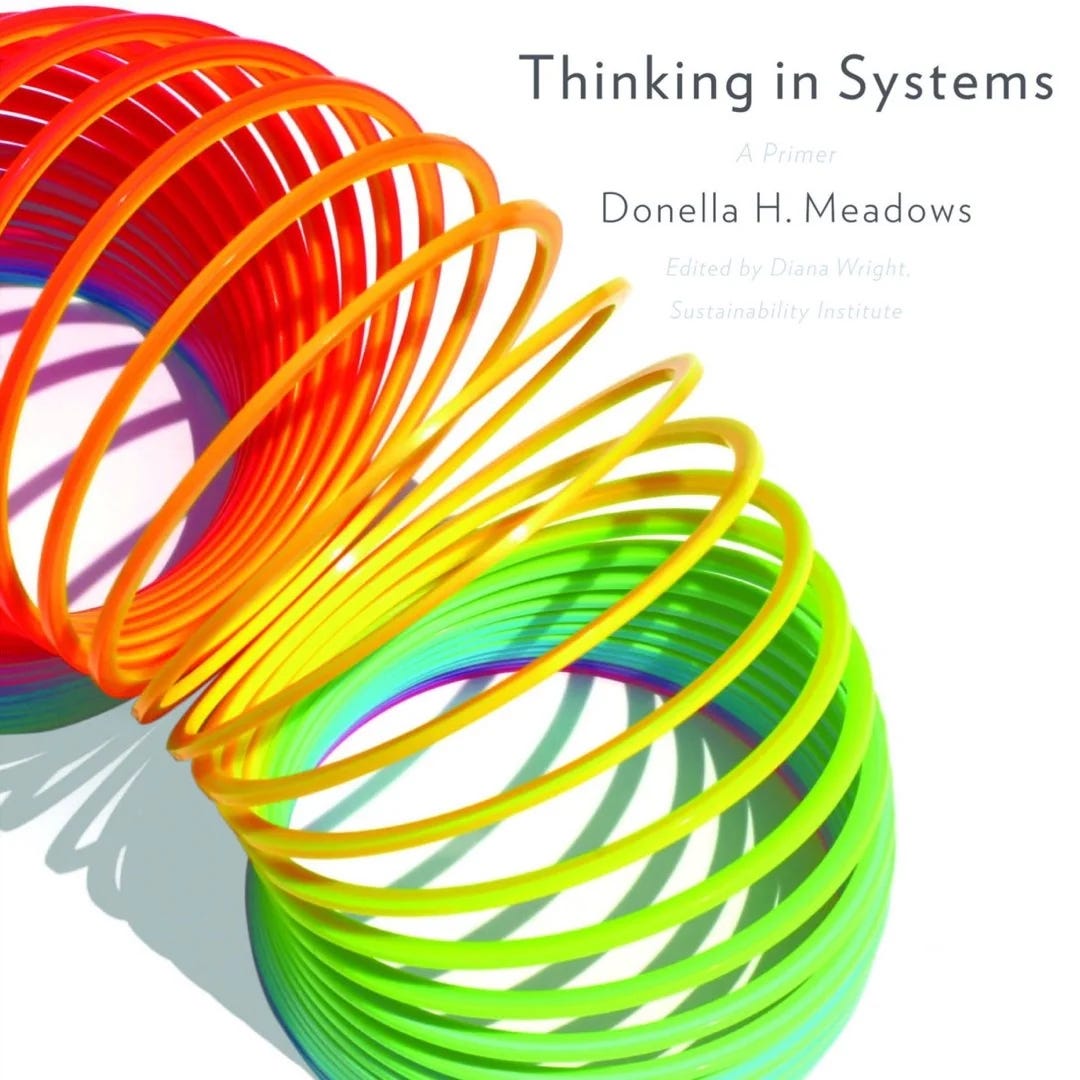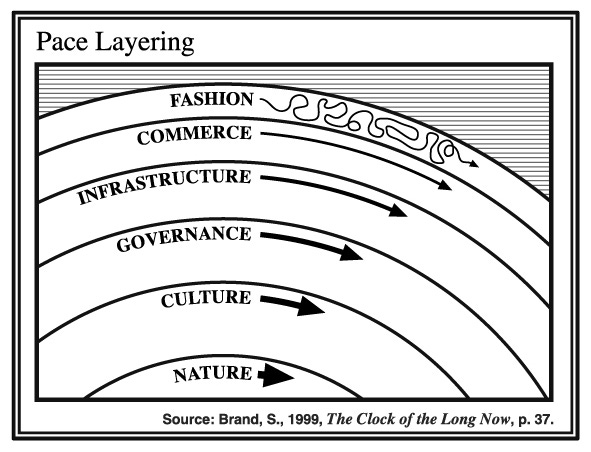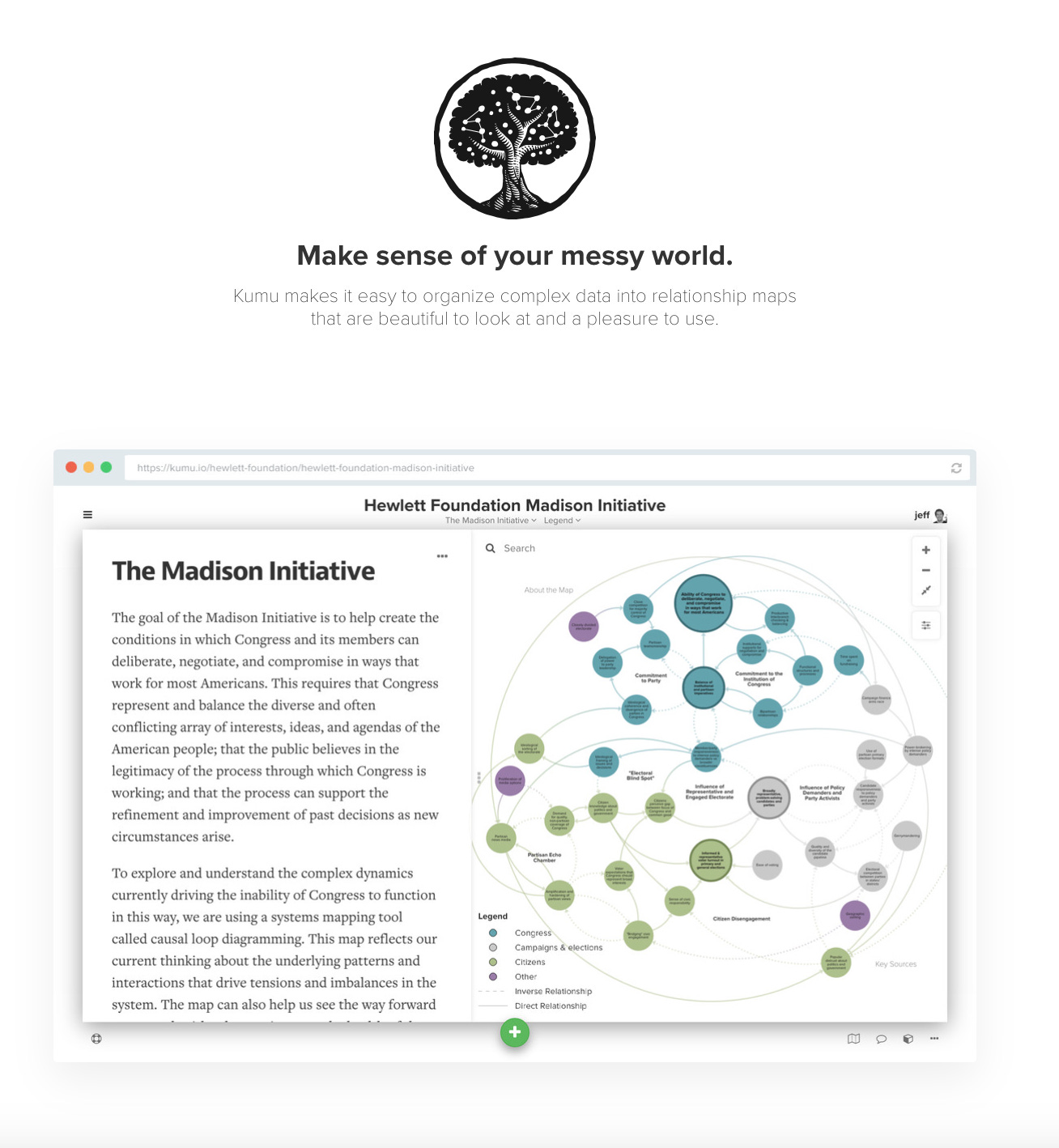Systems thinking strengthens strategy.
This was a key takeaway from our previous episode, where we practiced applying the Iceberg Model, a systems mapping tool, to uncover the hidden forces behind behavior and actions. Understanding these forces is critical to helping us move beyond reactive decision-making to a proactive approach, as these layers move at slower timescales than surface-level events.
Sounds pretty great, right? Want to learn more?
This week, I’m sharing a systems thinking primer - a quick start guide with some of my favorite resources to help you dive deeper into this powerful approach.
#1: Can Social Media Be Saved Case Study by The Artefact Group
TL;DR: Start with this case study for a clear, practical example of systems thinking in action, tackling a timely, complex tech challenge.
When I want to show the power of systems thinking applied to the wicked problems of the tech world, I point to this case study by Artefact Group, a Seattle-based responsible strategy and design firm (also the creators of Tarot Cards of Tech, which I teach students to use as an ethics impact assessment tool in my Intro to UX class).
They break down the process of applying systems thinking to complex problems in a clear, actionable way: first, understand the status quo at individual, community, and societal levels; identify root causes; then, prioritize the most effective interventions. They also demystify abstract concepts like feedback loops, showing how they help practitioners understand the cause-and-effect relationships underlying social media’s impacts. To get the most out of this case study, check out the full white paper.
#2: Thinking in Systems by Donella Meadows
Tl;DR: Read this book to learn systems thinking fundamentals in an approachable way.
You’ve read the social media case study from #1, and want to dive deeper into the how and why of a systems approach. Thinking in Systems offers just that. Donella Meadows introduces systems dynamics concepts such as stocks, flows, feedback loops, delays, and leverage points using everyday analogies (e.g., a bathtub filling and draining to explain stocks and flows).
Instead of relying solely on abstract theory, she grounds her explanations in real-world systems across different domains. Meadows discusses economic policies, environmental sustainability, and organizational decision-making, demonstrating how systems principles manifest in practice. You'll learn to spot and overcome common system traps (like the tragedy of the commons and rule beating), identify high-impact intervention points (aka leverage points), and develop a holistic mindset that fosters adaptability, resilience, and long-term thinking.
#3: Closing the Loop by Sheryl Cababa
Tl;DR: If you’re a designer looking for concrete applications of systems thinking to your day-to-day work, check out this practitioner's handbook.
While Thinking in Systems is a general intro to systems, Closing the Loop serves as a practitioner's handbook for integrating systems thinking into design practices. Sheryl Cababa introduces practical tools and frameworks, such as causal loop diagrams and stakeholder maps, to help designers understand complex interconnections and anticipate unintended consequences.
Something I especially appreciate about this book is how Cababa handles the tension between traditional user-centered design (UCD) and systems thinking. She acknowledges limitations of UCD (e.g., narrow focus on current user problems resulting in short-term fixes), while offering practical ways to sequence systems thinking and UCD approaches throughout product development. She also provides a clear ‘why’ and ‘how’ for integrating participatory design into your practice, empowering us to build with people, not just for people.
#4: Pace Layering by Stewart Brand
Tl;DR: Read this classic to understand system change as a function of time, helping you anticipate which system “layers” might resist, amplify, or absorb interventions.
Stewart Brand’s Pace Layering: How Complex Systems Learn and Keep Learning introduces a framework for understanding how different layers of a system evolve at varying speeds, ensuring both stability and adaptability. He outlines six layers:
Fashion/Art (fastest) – trends and cultural shifts
Commerce – business and market dynamics
Infrastructure – foundational systems like roads and utilities
Governance – laws and regulations
Culture – deep societal norms and traditions
Nature (slowest) – ecological and geological processes
This framework offers a powerful way to think about change. Innovation (Fashion/Art, Commerce) moves fast, but lasting impact requires working with slower-moving layers (Infrastructure, Governance, Culture, Nature). Ignoring these tensions can lead to friction, while aligning with them enables sustainable growth and adoption. You can use this model to build for long-term impact, helping to navigate trade-offs between disruption and stability.
If you’re interested in Pace Layering, check out The Clock of the Long Now and The Interval Bar, both created by The Long Now Foundation, which Stewart Brand co-founded.
#5: Kumu.io, A Systems Mapping Tool
TL;DR: Stop reading, start doing! Kumu is a free systems mapping tool that helps you start applying all you’ve learned to your own complex challenges.
By now, you might be inspired to start your very own systems map. I don’t blame you - once you start thinking in feedback loops, they cannot be unseen in all aspects of life (More sleep → Better focus → Tasks get completed faster → Less stress → Easier to fall asleep → Loop Repeats). It’s free to get started, with a gallery of examples showing how maps can help us visualize everything from the behavior of high-performing teams to the interconnectedness of world problems.
In Conclusion
Systems thinking isn’t just a theoretical lens - it’s a strategic advantage. The five resources shared here serve as a primer to learning systems mindsets and tools that can help you build for lasting impact. Whether you’re a designer, strategist, or product leader, a systems thinking approach can help you anticipate change and make stronger strategic decisions.
Resource Recap:
Can Social Media Be Saved?: a systems thinking case study.
Thinking in Systems: the fundamentals of systems thinking.
Closing the Loop: systems thinking for design practitioners.
Pace Layering: framework to understand system change over time.
Kumu.io: hands-on tool for building your own systems maps.
Have a favorite systems resource? Let me know at hello@sendfull.com
Human-Computer Interaction News
AI Boosts Physician Decision-Making, but Slows Workflow: A Stanford Medicine study of 92 physicians found that GPT-4 assistance improved management reasoning (balancing treatment decisions and testing strategies while managing risk) by 6.5% over conventional resources alone, though AI users took two minutes longer per case. Notably, AI alone performed similarly to AI-assisted doctors, highlighting its potential in clinical decision-making.
Truly Autonomous AI On the Horizon: Researchers at the University of Technology Sydney have developed a new AI algorithm, called Torque Clustering, that significantly improves how AI systems independently learn and uncover patterns in data, without human guidance.
How Academic Researchers Use AI: Wiley surveyed 4,946 academic researchers worldwide about their AI use. The most common uses were translation, proofreading and editing manuscripts. Researchers think AI can already perform some tasks better than people, such as manuscript preparation, reviewing a large number of studies, and ‘plain language’ article summaries.
Designing emerging technology products? Sendfull can help you find product-market fit. Reach out at hello@sendfull.com
That’s a wrap 🌯 . More human-computer interaction news from Sendfull in two weeks!







